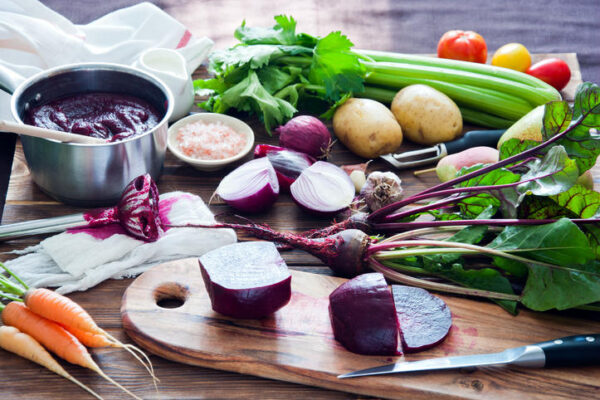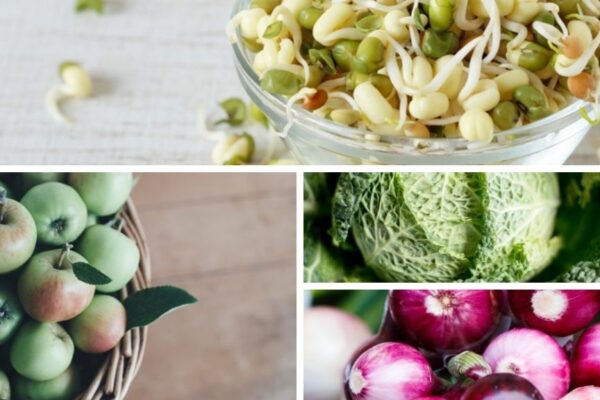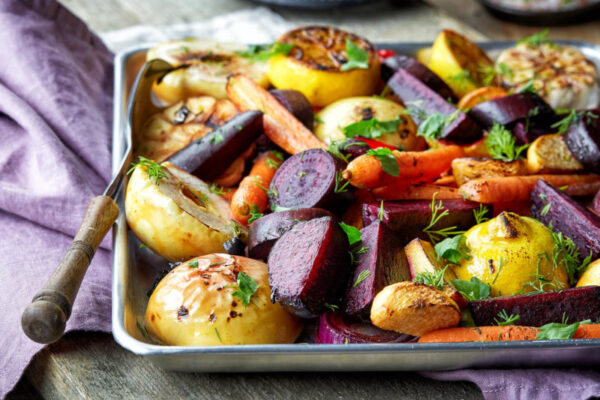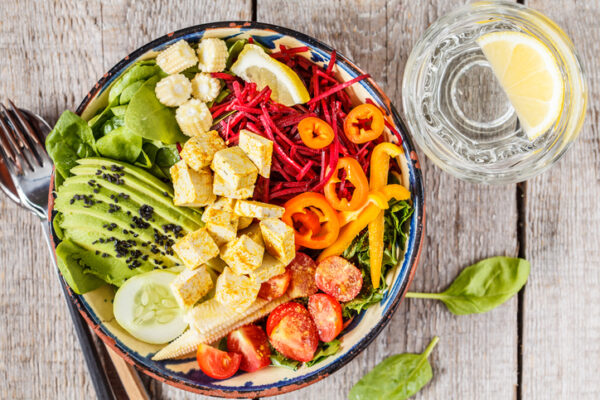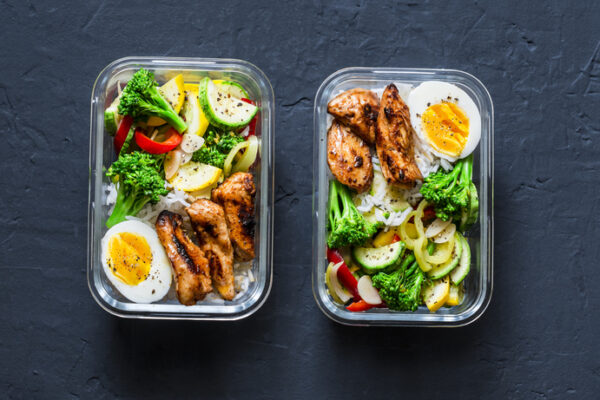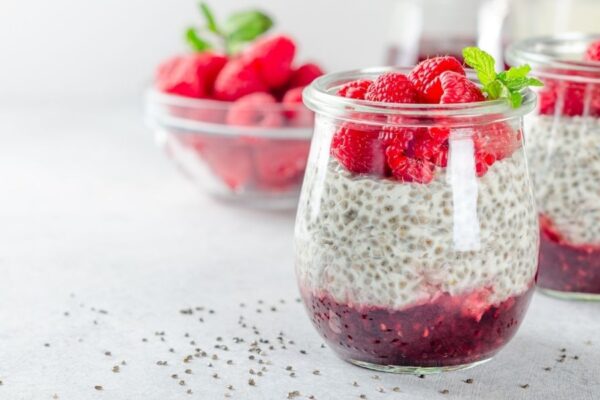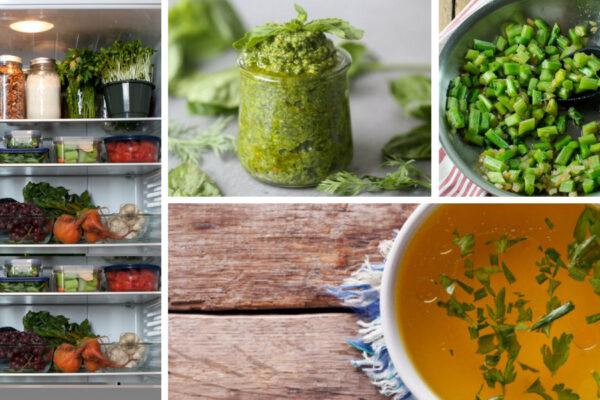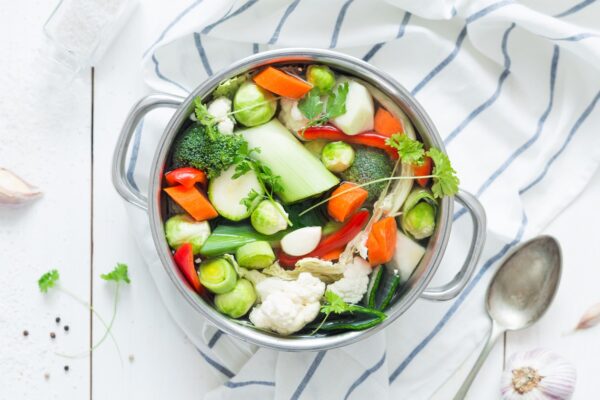How to Cook Beans and Grains
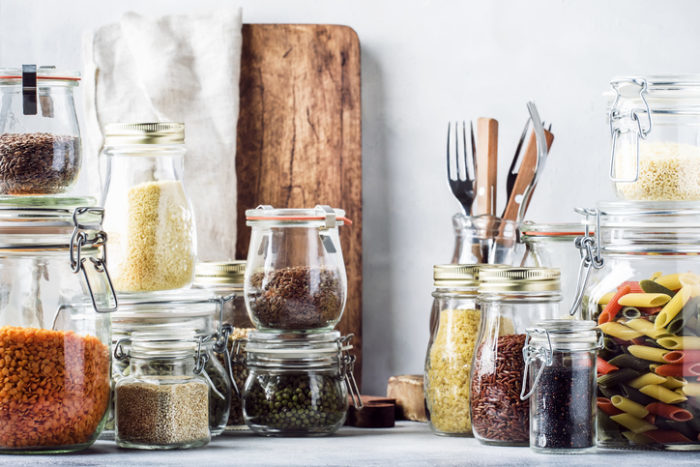
As you may imagine, at the Academy of Culinary Nutrition we are huge fans of cooking from scratch as much as we can. Pre-cooked and pre-prepared foods are more expensive, and may contain additional ingredients that detract from our health. If you’ve tried to cook beans and grains at home and simply end up with a pile of mush, this guide to cooking great-textured beans and grains is here to help.
Why Cook Beans and Grains at Home?
Home-cooked beans and grains are:
- Cheaper than canned or pre-cooked
- Easy to make
- Simple to batch prep for meals throughout the week, or you can freeze to use them later
- Free of bisphenol A (BPA), a hormone-disrupting chemical found in canned goods
- Low waste or zero waste if you bring your own containers to the grocery store or purchase in bulk
- Versatile for a number of different recipes, including dips, burgers, salads, soups and one-pot meals
- Quick-cooking if you have certain appliances like the Instant Pot or a rice cooker
- Easier to digest by adding specific herbs and spices
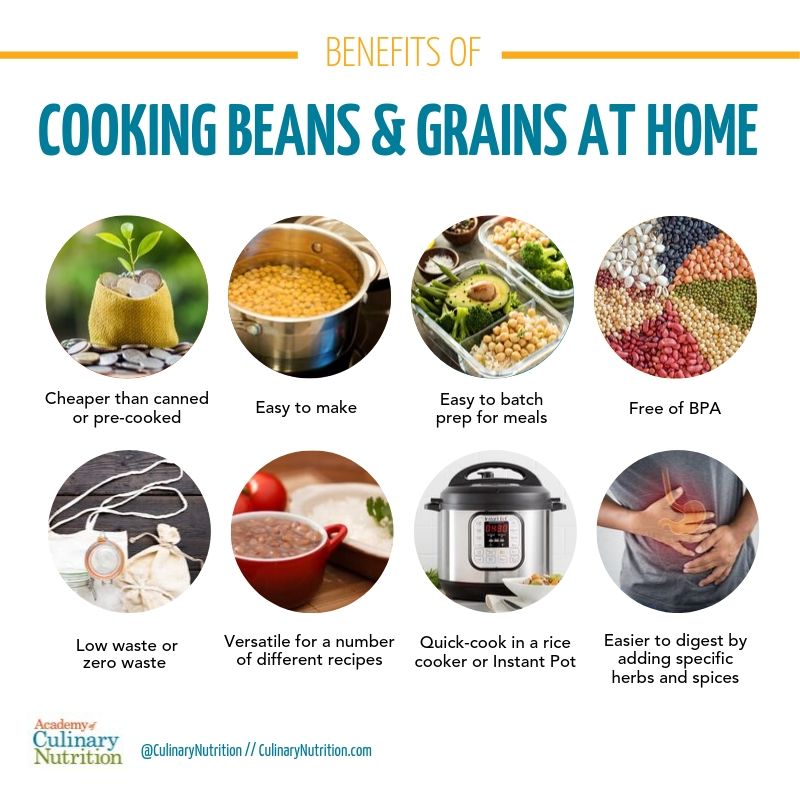
Culinary Nutrition Benefits of Beans and Legumes
Beans are good sources of:
- Protein, which is important for building and maintaining immunity, boosting energy levels, encouraging healing and repair, and assembling enzymes and hormones.
- Fibre, crucial for proper digestion, cardiovascular health and blood sugar balance.
- Iron for supporting energy levels and shuttling oxygen throughout the body.
- Folate, a B vitamin that plays a key role in brain and nervous system health and development, red blood cell production, and reproductive health.
- Antioxidants, which help reduce damage in the body and protect our cells from harm.
Types of beans and legumes:
- Chickpeas
- Black beans
- Kidney beans
- Cannellini beans
- Adzuki beans
- Lima beans
- Black-eyed peas
- Navy beans
- Pinto beans
- Soy beans
- Mung beans
- Pinto beans
- Lentils (red, green, black)
- Split peas
Culinary Nutrition Benefits of Gluten-Free Grains
Our Culinary Nutrition Expert Program is exclusively gluten-free because evidence indicates a gluten-free diet is beneficial for a wide range of health conditions.
Health-wise, gluten-free grains are great sources of:
- B vitamins, essential for energy levels and managing stress.
- Fibre, important for digestion, regularity, blood sugar balance and satiety, cardiovascular health and weight management.
- Magnesium, a mineral that helps us relax and supports bone health.
- Iron for energy levels.
- A spectrum of vitamins and minerals associated with improved overall longevity.
Gluten-free grains include:
- Millet
- Rice (white, brown)
- Teff
- Sorghum
- Oats (if certified gluten-free, check labels)
Gluten-free pseudograins aren’t technically true grains because they are not grasses, but they are cooked and used like grains. They are:
- Quinoa
- Buckwheat
- Wild rice
- Amaranth
Get your FREE Guide to Cooking Beans and Grains plus 35 more free resources!
Fill out the form below for instant access.
Free Resource Library
Enjoy more than 40 downloadable guides, recipes, and resources.
How To Cook Beans: a step-by-step guide
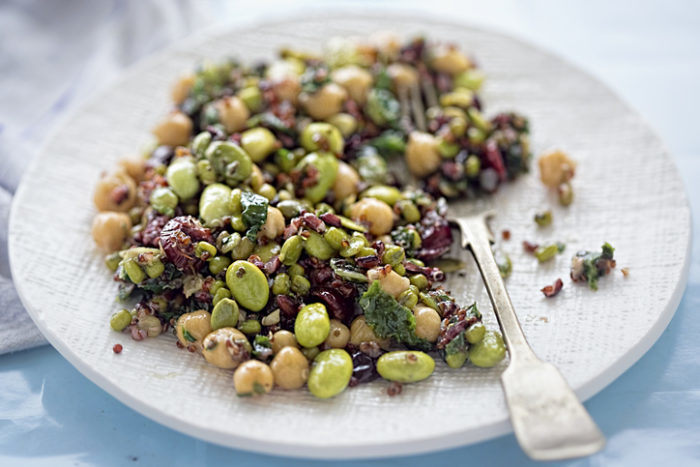
Tools Needed:
- A large bowl for soaking
- Fresh water
- Dried beans
- A large pot for cooking
- Strainer or colander
What To Do:
- Place 1 cup of beans in your large bowl and cover with fresh water. The water should cover the beans by at least 2 inches, as they will expand as they soak.
- Soak 8 hours, or overnight.
- Drain and rinse your beans in the strainer or colander. Rinse for a couple of minutes to ensure the anti-nutrients are released (more on that below!).
- Add the soaked beans into the pot and cover with more fresh water (do not use your saved bean water). Bring to a boil.
- Cook beans until they are tender – cooking times will vary on the size of the bean and if they were soaked for extra time. Larger beans will take 30-40 minutes, lentils are much quicker. Download our chart of cooking times for specific beans by filling out the form below.
- When the beans are finished cooking, drain and rinse them in cold water.
- Use in your favourite recipes, or freeze them for later.
How To Make Beans More Digestible
Beans and legumes are packed with protein and complex carbohydrates, along with a specific type of carb called oligosaccharides that aren’t digested until they arrive in your colon. This can lead to some uncomfortable digestive symptoms, like bloating and gas. However, there are ways to make your beans more digestible, including:
- Soaking and rinsing as explained above.
- Adding seaweed like kombu to the pot when cooking, which tenderizes the beans.
- Adding digestive-friendly spices while cooking such as ginger, cumin, fennel seeds, turmeric, or asafoetida.
- Don’t add salt until after the beans have cooked – salt during cooking will make them tougher.
- Start off by eating small amounts of beans and legumes and increase as you become more tolerant.
How to Cook Beans: Troubleshooting
One of the most common complaints we hear from Culinary Nutrition Expert students is that home-cooked beans are too tough. In addition to using a seaweed to soften, baking soda may help. Also, double-check that you are using fresh beans – if they’ve been sitting in your pantry for three years, they’re going to be tougher and drier.
If the beans are too mushy, you have overcooked them. It’s helpful to set a timer so you don’t forget about your beans. You also need to get to know the heat settings on your stove and the ingredients you choose, as this varies. Once you get into the groove, cooking beans will be much easier.
How to Cook Grains: A Step-By-Step Guide
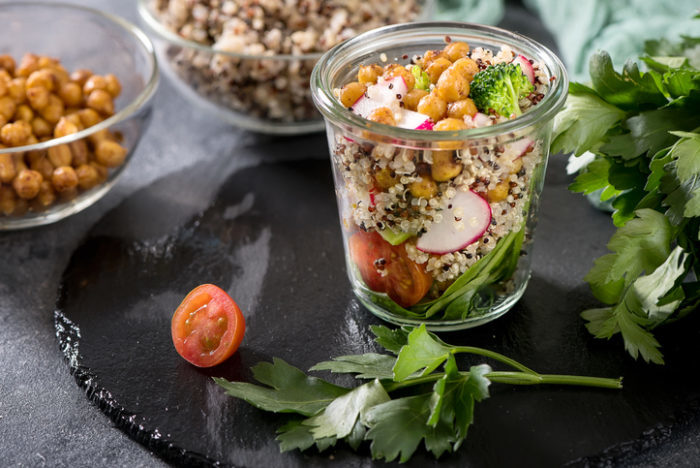
Tools Needed:
- A large bowl for soaking (optional)
- Fresh water
- 1 cup gluten-free grains
- 1 tsp acid (lemon juice or apple cider vinegar)
- A medium-sized pot for cooking, with a lid
- Fine mesh strainer
Note: Soaking grains will reduce the amount of cooking time.
What To Do, If Soaking Grains:
- Place your grains of choice and the acid into a large bowl and cover with water. Allow to soak for 2-4 hours at minimum (you can soak longer if desired).
- Drain and rinse your grains in your strainer.
- Add the grains and 1 1/2 cups fresh water into the pot. Bring to a boil, then reduce heat to low. Cover and allow to cook, undisturbed, until all the water is absorbed. Cooking times will vary on the grain and soaking time. Quinoa, white rice and millet are quick-cooking, whole grains like brown rice, wild rice and sorghum take longer. Download our chart of cooking times and liquid ratios for specific grains by filling out the form below.
- Use your grains in your favourite recipes, or freeze for later.
What To Do, If NOT Soaking Grains:
- Rinse your grains for a few minutes in your strainer. Ensure to drain off as much of the liquid as possible.
- Add your grains and fresh water to the pot (you can skip the acid). Generally, the ideal ratio is 1 cup of grains to 2 cups liquid. However, some grains require an additional cup, such as sorghum and wild rice. Download our chart of cooking times and liquid ratios for specific grains by filling out the form below.
- Bring the pot to a boil, then reduce heat to low. Cover and allow to cook, undisturbed, until all the liquid is absorbed.
- Use your grains in your favourite recipes, or freeze for later.
How To Further Increase the Nutritional Value of Grains
- Add sea salt for flavour and mineral content. Learn more about the different types of salt you can use in your kitchen here.
- Use bone broth, vegetable broth, coconut milk or herbal tea instead of water.
- Add dried or fresh herbs and spices or culinary adaptogens to the pot.
- Add dried fruit for more fibre, flavour and minerals.
How to Cook Grains: Troubleshooting
Your grains end up too sticky or mushy? Your best bet is to follow the cooking times and liquid ratios for each grain, but these other tips can help too:
- After your grains are done cooking, take them off the heat. Wrap the pot lid in a tea towel, and then place it firmly back on the pot. This will help absorb excess moisture.
- Spread and separate your grains out on a baking sheet, allowing them to dry slightly before using or storing them.
- Undercook them slightly, as they will cook a bit longer after you turn off the heat.
What About Arsenic in Rice?
Arsenic is heavy metal found naturally in water and soil, and was once commonly used as a poison. It is carcinogenic, and makes its way into rice because rice fields are flooded, giving the grain more time to absorb it.
Studies on rice show that most varieties of rice are contaminated with arsenic, and some products – especially rice products for babies and young children – have arsenic levels that are considered concerning.
Arsenic in rice is something to be mindful of, but there are a few ways to mitigate the potential risk:
- Basmati rice is lower in arsenic than other varieties.
- There are certain rinsing and cooking methods for rice that massively lower the amount of arsenic.
- Rotate through different gluten-free grains, so you’re limiting exposure and not eating rice (or other rice products daily or multiple times a day.
How to cook rice to reduce and eliminate arsenic
- Soak your rice for 8 hours.
- Drain and rinse well.
- Add lots of extra water to the pot when cooking. Basically, cook the rice like pasta. Boil rice until tender, and then drain the excess water.
What About Anti-Nutrients in Beans and Grains?
Anti-nutrients are compounds that interfere with nutrient digestion and absorption. Anti-nutrients in grains, beans and legumes include:
- Phytic acid: interferes with the absorption of certain minerals like calcium, iron, zinc and magnesium.
- Lectins: these are proteins that bind to carbohydrates and become sticky, which can possibly lead to digestive issues, leaky gut and autoimmune conditions. You can read more on lectins and their health impact here.
- Saponins: have a ‘soapy’ texture and bitter flavour, and interfere with nutrient absorption.
- Tannins: interfere with iron absorption.
- Protease inhibitors: compounds that interfere with the digestion and absorption of proteins.
The good news is these anti-nutrients can be massively reduced or eliminated through several preparation and cooking methods! You can decrease anti-nutrients when you cook beans and grains by:
- Soaking: this helps to release anti-nutrients, which is why we discard the soaking water rather than using it for cooking.
- Rinsing: once grains or legumes are soaked, rinsing washes away the anti-nutrients.
- Sprouting: this not only reduces anti-nutrients, it also helps improve digestion and unlocks nutrients so they are more available for us to use. Discover how to sprout here.
- Cooking: heat destroys some anti-nutrients.
- Fermentation: reduces anti-nutrients, aids digestion and supports the immune system.
- Adding an acid: Citrus or apple cider vinegar can help reduce anti-nutrients.
There you have it! Your complete culinary nutrition guide to help you cook beans and grains. If you’re looking for some recipe inspiration to use your beans and grains, we have a few suggestions below.
Recipe Inspiration: Beans and Grains
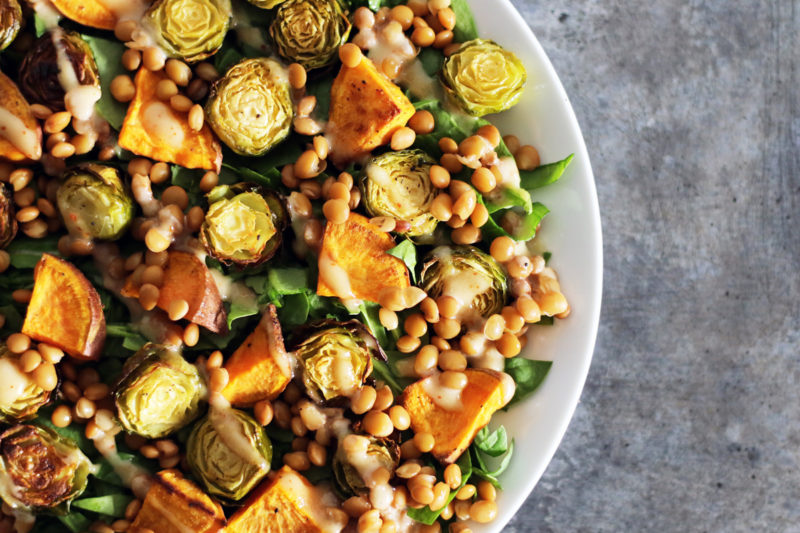
- Wild Rice Protein Power Salad
- Savory Butternut Squash and Lentil Muffins
- Crunchy Roasted Chickpeas
- Sweet Potato Brussels Sprouts Salad with Maple Tahini Dressing
- Sweet Potato Lentil Goulash
- 20 Best Dip and Hummus Recipes
- Cranberry Apple Baked Oatmeal
- Quinoa, Bean and Lentil Salad
- Apple Cinnamon Protein Overnight Oats
- Stuffed Acorn Squash
- Quinoa Kale Salad with Balsamic Vinaigrette
Free Resource Library
Enjoy more than 40 downloadable guides, recipes, and resources.
















